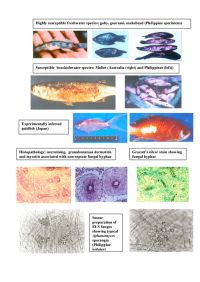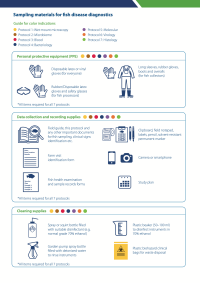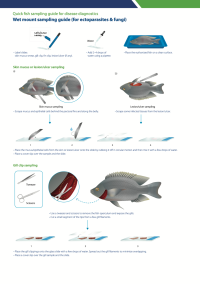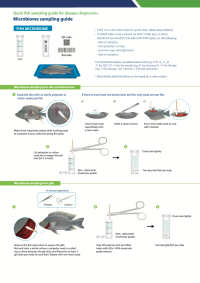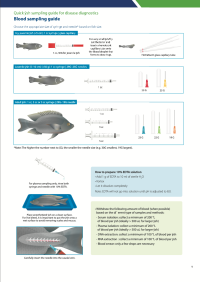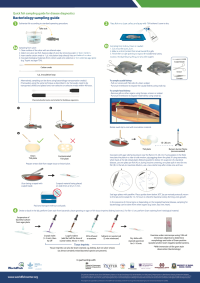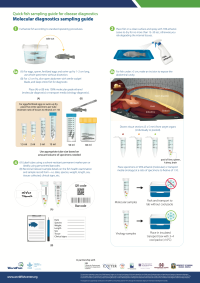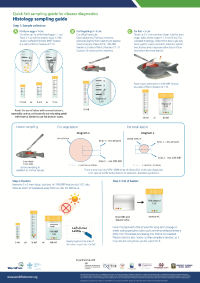Quick fish sampling for disease diagnostics: Package of practices
6 February 2024 | Delamare-Deboutteville, J., Khor, L., Ali, S.E., and Chadag, V. | 26052 views | .pdf | 260.77 KB | Health and Biosecurity
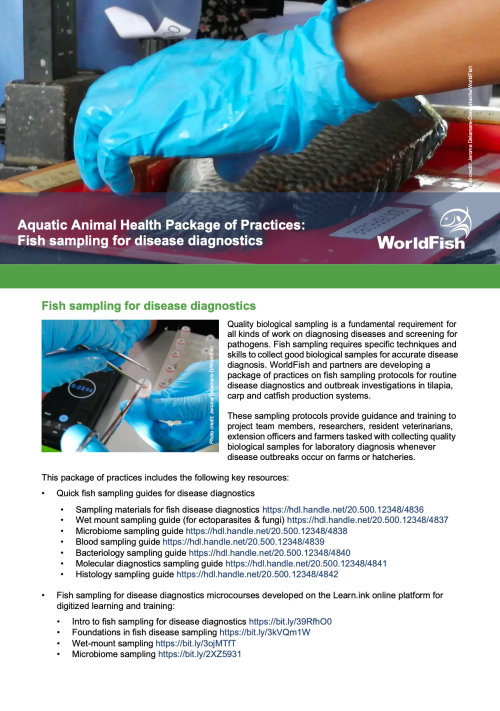
Quality biological sampling is a fundamental requirement for all kinds of work on diagnosing diseases and screening for pathogens. Fish sampling requires specific techniques and skills to collect good biological samples for accurate disease diagnosis.
This package of practices developed by WorldFish and partners provides advice on fish sampling protocols for routine disease diagnostics and outbreak investigations in tilapia, carp and catfish production systems.
These sampling protocols provide guidance and training to project team members, researchers, resident veterinarians, extension officers and farmers tasked with collecting quality biological samples for laboratory diagnosis whenever disease outbreaks occur on farms or hatcheries.
The six quick fish sampling guides for disease diagnostics in this package (linked below) are:
- Wet-mount sampling guide (for ectoparasites & fungi).
- Fish & water microbiome sampling guide.
- Blood sampling guide.
- Bacteriology sampling guide.
- Molecular and virology sampling guide.
- Histology sampling guide.
A free online introductory course on fish sampling for disease diagnostics is also available via Learn.ink.
Creative Commons Attribution-NonCommercial.
